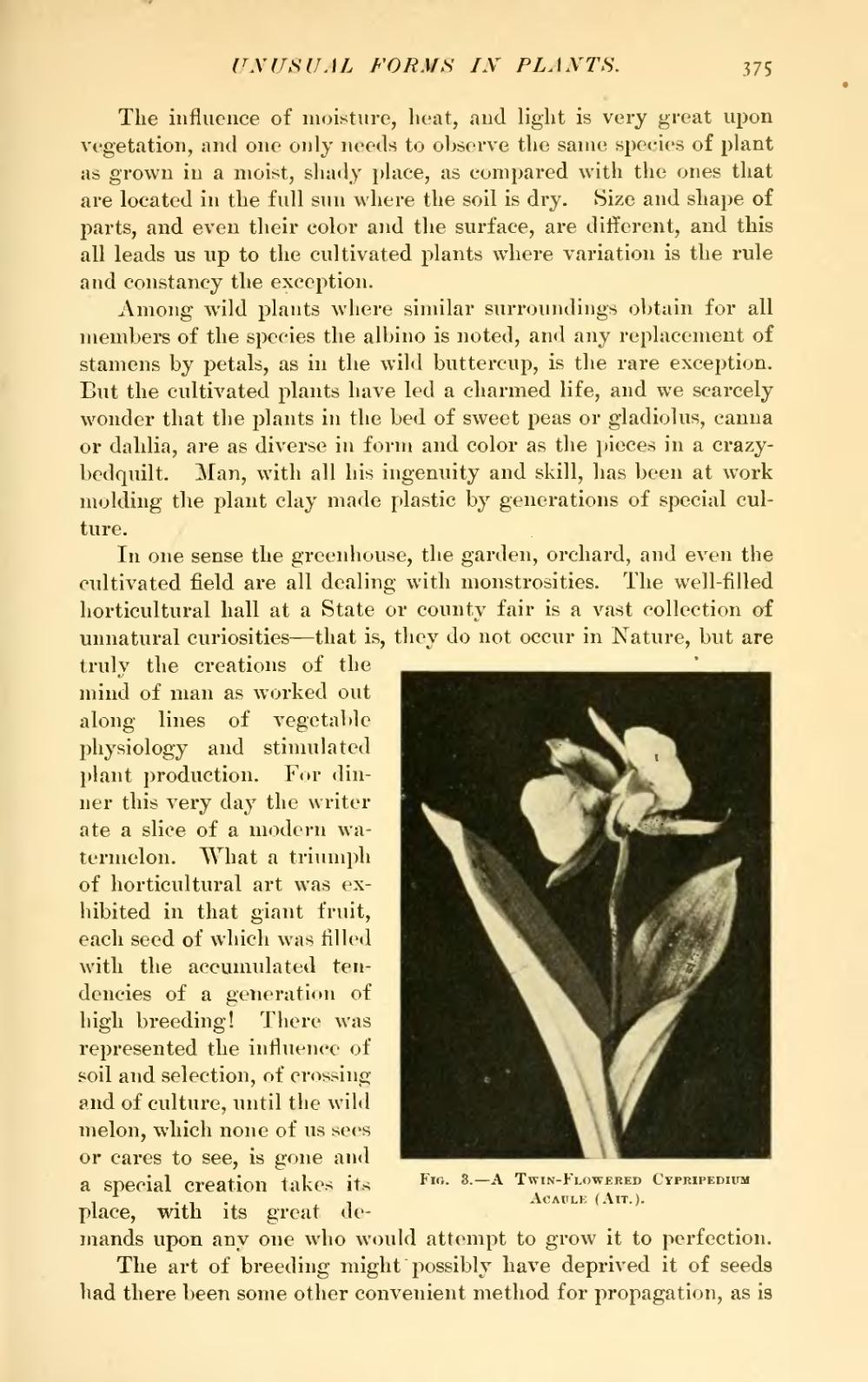The influence of moisture, heat, and light is very great upon vegetation, and one only needs to observe the same species of plant as grown in a moist, shady place, as compared with the ones that are located in the full sun where the soil is dry. Size and shape of parts, and even their color and the surface, are different, and this all leads us up to the cultivated plants where variation is the rule and constancy the exception.
Among wild plants where similar surroundings obtain for all members of the species the albino is noted, and any replacement of stamens by petals, as in the wild buttercup, is the rare exception. But the cultivated plants have led a charmed life, and we scarcely wonder that the plants in the bed of sweet peas or gladiolus, canna or dahlia, are as diverse in form and color as the pieces in a crazy-bedquilt. Man, with all his ingenuity and skill, has been at work molding the plant clay made plastic by generations of special culture.
In one sense the greenhouse, the garden, orchard, and even the cultivated field are all dealing with monstrosities. The well-filled horticultural hall at a State or county fair is a vast collection of unnatural curiosities—that is, they do not occur in Nature, but are truly the creations of the mind of man  Fig. 3.—A Twin-Flowered Cypripedium Acaule (Ait.). as worked out along lines of vegetable physiology and stimulated plant production. For dinner this very day the writer ate a slice of a modern watermelon. What a triumph of horticultural art was exhibited in that giant fruit, each seed of which was filled with the accumulated tendencies of a generation of high breeding! There was represented the influence of soil and selection, of crossing and of culture, until the wild melon, which none of us sees or cares to see, is gone and a special creation takes its place, with its great demands upon any one who would attempt to grow it to perfection.
Fig. 3.—A Twin-Flowered Cypripedium Acaule (Ait.). as worked out along lines of vegetable physiology and stimulated plant production. For dinner this very day the writer ate a slice of a modern watermelon. What a triumph of horticultural art was exhibited in that giant fruit, each seed of which was filled with the accumulated tendencies of a generation of high breeding! There was represented the influence of soil and selection, of crossing and of culture, until the wild melon, which none of us sees or cares to see, is gone and a special creation takes its place, with its great demands upon any one who would attempt to grow it to perfection.
The art of breeding might possibly have deprived it of seeds had there been some other convenient method for propagation, as is

